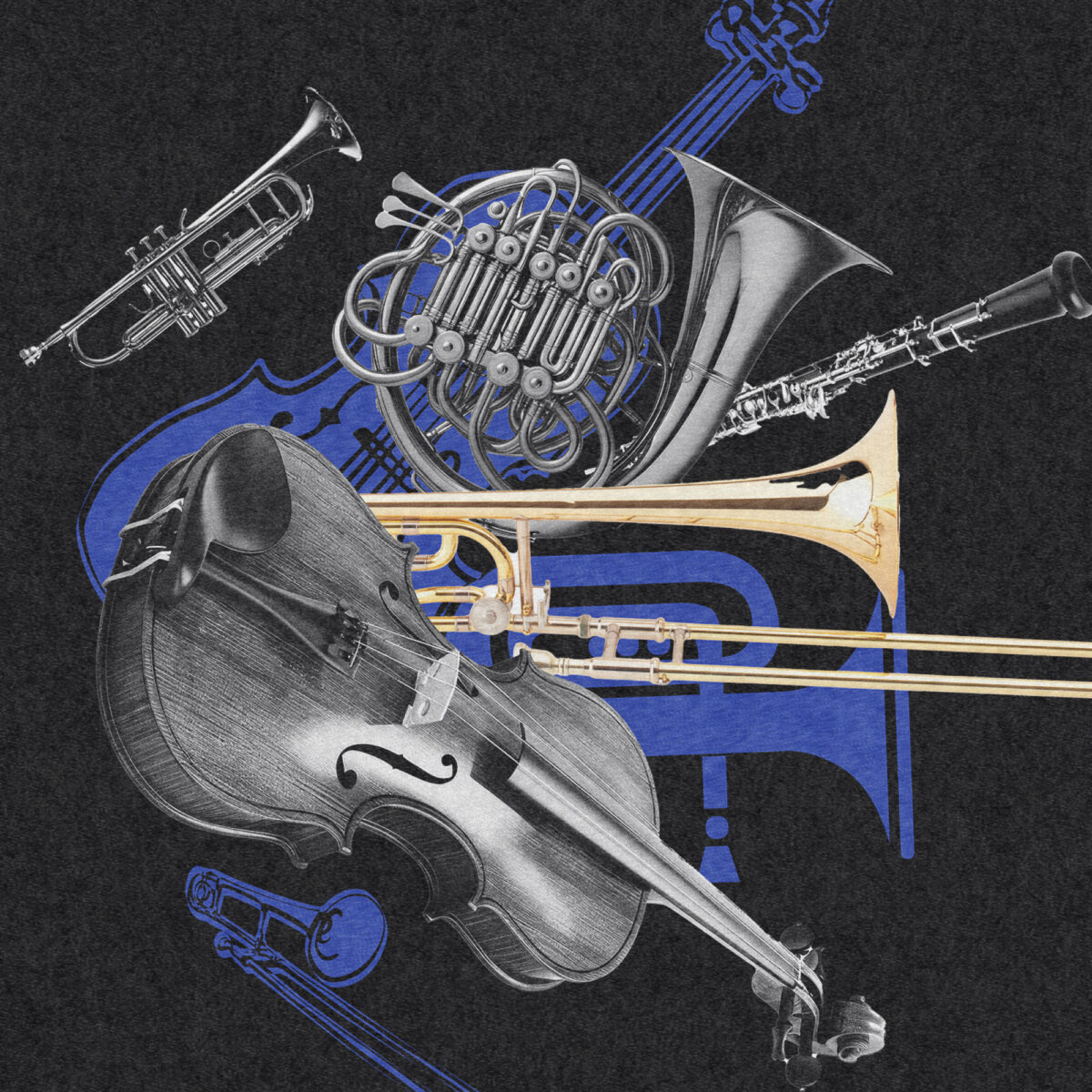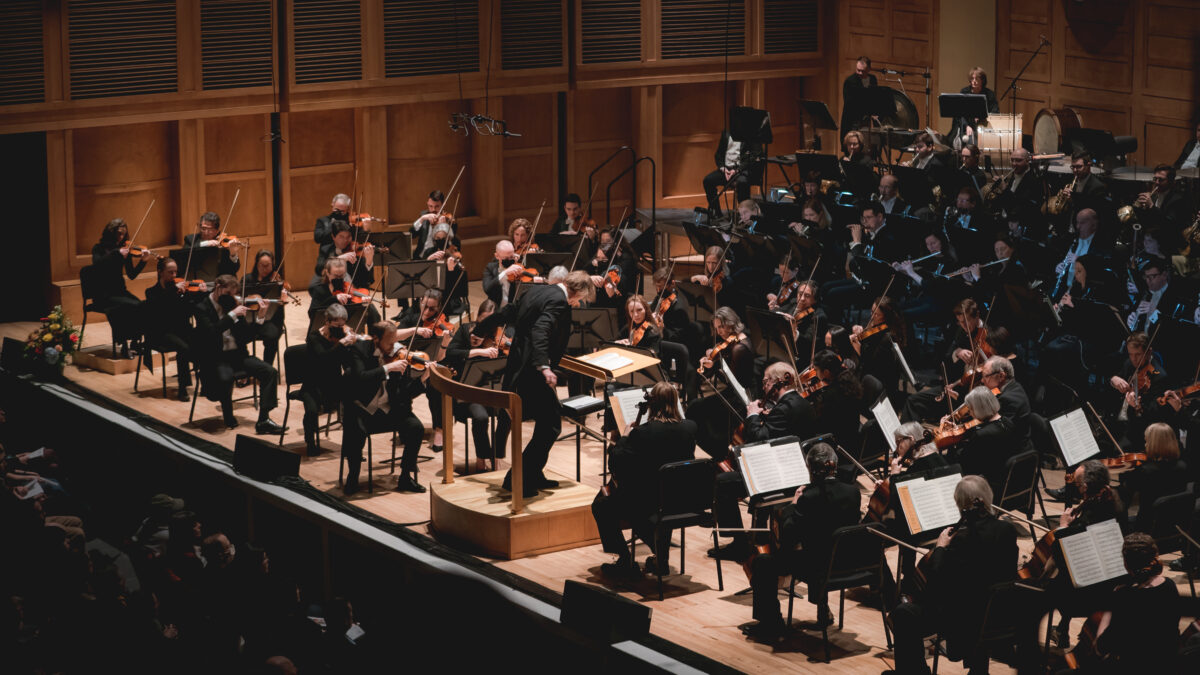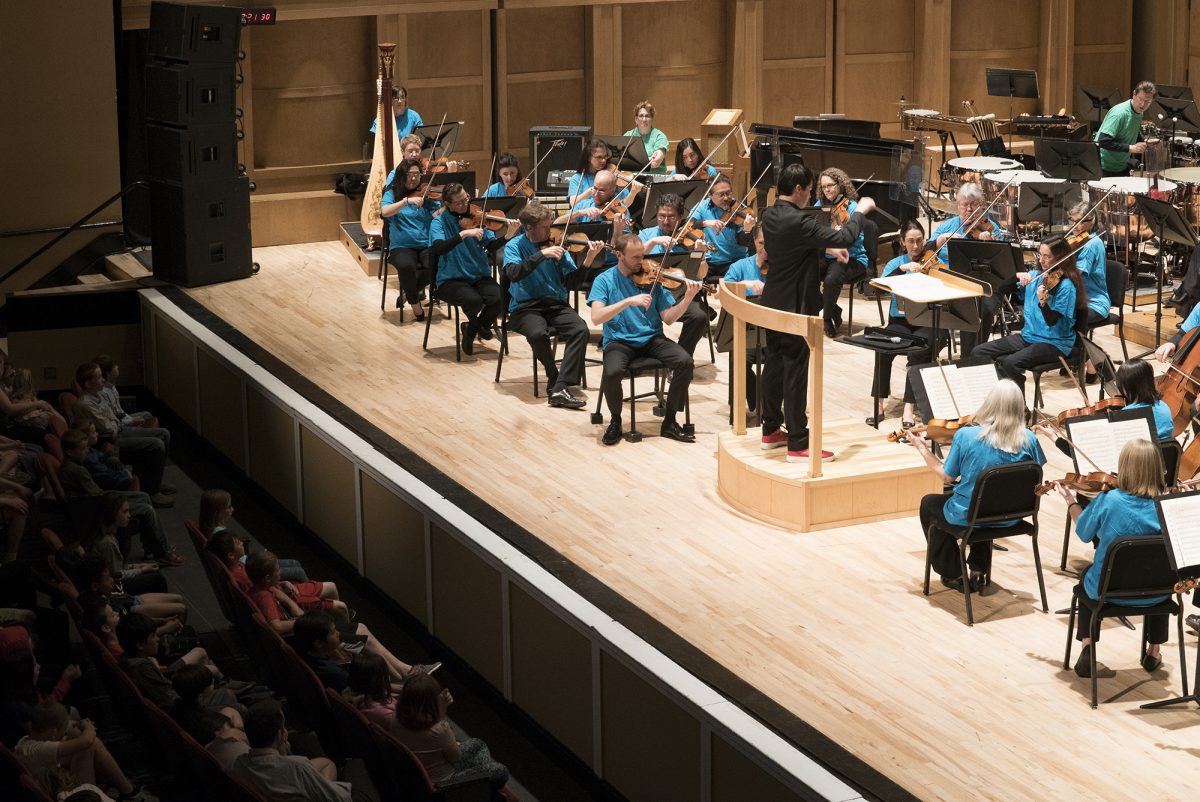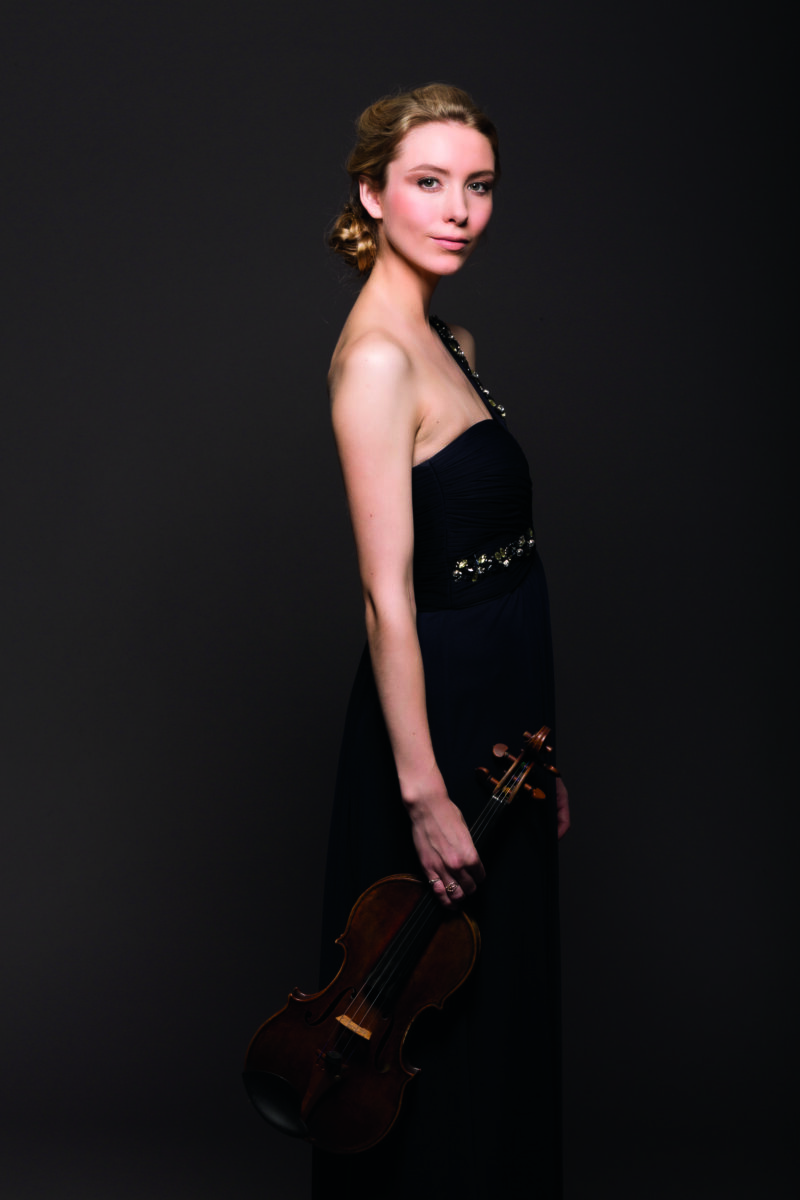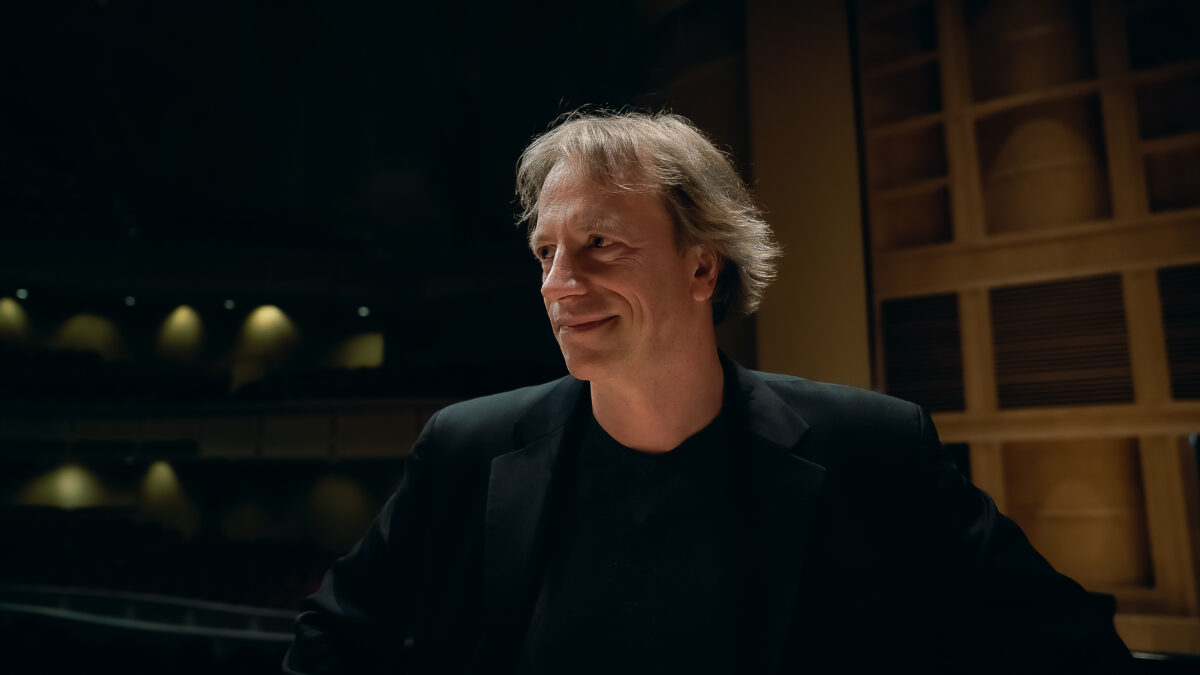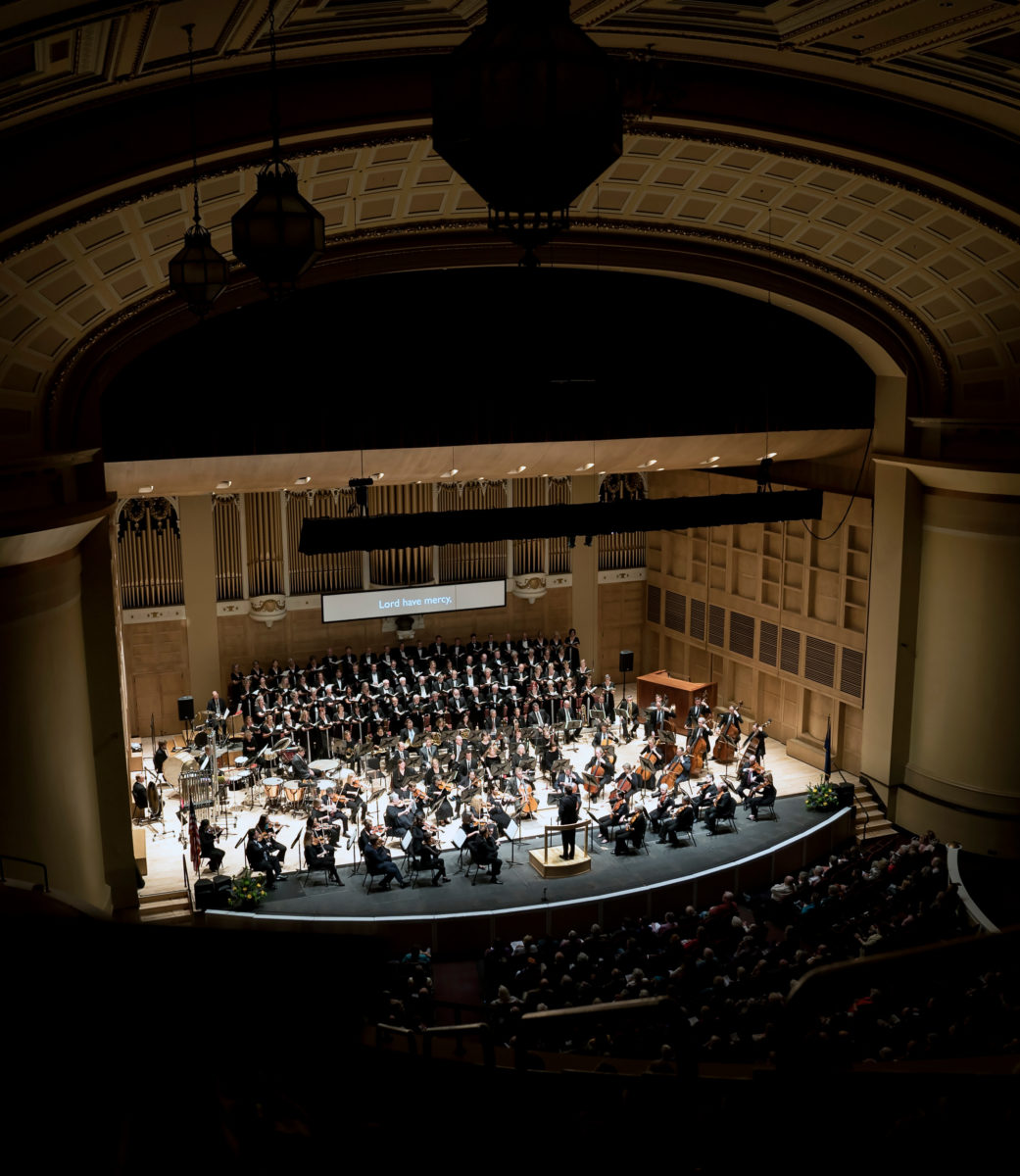Mozart & Brahms Program Notes
Brian Nabors
Pulse
Brian Raphael Nabors was born in Birmingham, Alabama in 1991. His piece Pulse was first performed by the Nashville Symphony Orchestra, conducted by Maestro Giancarlo Guerrero on September 9th, 2019 in Laura Turner Concert Hall at the Schermerhorn Symphony Center, Nashville, TN for the NSO 2019 Composer Lab Showcase. The score calls for 3 flutes, piccolo, 3 oboes, English horn, 3 clarinets, bass clarinet, 3 bassoons, contrabassoon, 4 horns, 3 trumpets, 3 trombones, tuba, timpani, percussion, harp, keyboard, and strings.
My conception of Pulse began as a long contemplation of daily life as we know it, combined with thoughts of life in nature. The universe seems to have this natural rhythm to it. It is as if every living and moving thing we are aware and unaware of is being held together by a mysterious, resolute force. Pulse is an episodic rhapsody that explores several phases and colorful variants of rhythm all held together by an unwavering pulse. Each episode is meant to symbolize a different scenario of life for the listener, be it a buzzing modern metropolis, a deep wilderness abundant with animalia, or the scenic endless abyss of the ocean. All of these worlds and their philosophical meanings are then brought together in a contemplative theme of “unification” in the strings that symbolizes our deep connection as living beings to everything within, over, under, and around us.
– Brian Nabors
********
Wolfgang Amadè Mozart
Concerto for Piano & Orchestra No. 24 in C minor, K. 491
Wolfgang Amadè Mozart (he never used “Amadeus” except when making a joke) was born in Salzburg, Austria in 1756 and died in Vienna in 1791. He composed this concerto in 1786 and first performed it in Vienna the same year. Mozart’s cadenzas were likely improvised on the spot and do not survive. The score calls for solo piano, flute, 2 oboes, 2 clarinets, 2 bassoons, 2 horns, 2 trumpets, timpani, and strings.
If there weren’t already enough reasons to love Mozart, there is this concerto. Beethoven thought so, too: he performed the work himself and it surely influenced his own C-minor concerto (No. 3, Op. 37). The inevitable comparison was daunting. “Ah,” he said, “we shall never be able to do anything like this.”
Mozart so rarely wrote entire works in minor keys—especially concertos—that everyone seems anxious to find the “tragic motivation” behind them. Yet the corresponding “tragedies” in his personal life are rarely if ever found. Part of the problem is the word itself; Mozart’s minor-key works do not, for the most part, sound tragic—they sound deep.
Even the most joyous of Mozart’s major-key works are tinged with minor-key passages that give them a depth and expressiveness that are a large part of the reason we keep coming back to them. It is interesting, actually, to listen for the major-key interludes in this concerto as we do the minor-key passages in Mozart’s major-key works. They seem to say: “I know there’s more to it than this—and I see you know it, too.” In one way these passages simply give musical contrast, just as an artist must paint the darkness in order to show the light. But with Mozart the picture always contains greater scope and emotional complexity than is visible at a glance, and never more so than with this remarkable concerto.
The first movement begins its theme sotto voce, then in full-voice. The music is almost relentlessly minor, but this is not a storm; it is, perhaps, the aftermath of a storm. When the piano enters it is not in contrast to what went before but in reaction to it. As the movement unfolds it remains fixated upon that dark opening theme.
The Larghetto lives in a vastly different world, one of almost existential purity. It is constructed very much like a rondo, with the two contrasting episodes initiated by the wind band each time. When the piano returns us to the opening music it is with subtle but telling differences.
The Finale’s march brings with it six variations and an extended coda. As each variation is repeated, Mozart is not content to serve the same dish twice; the repeats are variations on the variations. Some of the episodes are almost shocking in their major-key contrast—the woodwind-led music just before the cadenza is one of these. Still, Mozart doesn’t offer us a gratuitous transformation to a “happy ending.” The ominous march prevails, musically and emotionally.
Any number of arcane musical matters could be analyzed to help “explain” this concerto: the large orchestra with both oboes and clarinets; the unusual 3/4 meter of the first movement; the surprisingly independent winds everywhere you look; the short shrift given to second subjects and the concentration on “lesser” themes; the extravagant chromaticism and almost outrageous modulations; the “continuousness” of the music as it avoids sharp cadences and firm demarcations; and a million other details.
Yet that’s just what those things are: details. They cannot explain the limitless depth of this music nor its power to move us. Mozart’s C-minor Piano Concerto simply is: a work so incredible that it left even the supremely self-confident Beethoven awestruck.
– Mark Rohr
********
Johannes Brahms
Symphony No. 4 in E minor, Op. 98
Johannes Brahms was born in Hamburg in 1833 and died in Vienna in 1897. He completed his Fourth Symphony in 1885 and conducted the first performance at Meiningen the same year. The symphony calls for 2 flutes, piccolo, 2 oboes, 2 clarinets, 2 bassoons, contrabassoon, 4 horns, 2 trumpets, 3 trombones, timpani, triangle, and strings.
Brahms was a reluctant symphonist, for he knew the comparisons to Beethoven were inevitable: “You have no conception of how the likes of us feel when we hear the tramp of a giant like him behind us.” It was not until he reached his forties that he met his own standards and released his First Symphony. Twenty years later, while composing the Fourth, his reluctance still showed. From his summer home he wrote a friend: “Might I venture to send you a piece of a piece of mine, and would you have time to look at it and write me a word? On the whole, unfortunately, my pieces are pleasanter than I am and need less setting to rights! But the cherries never get ripe for eating in these parts, so don’t be afraid if you don’t like the taste of the thing. I’m not at all eager to write a bad number four.”
Brahms overcame his trepidations by applying every last measure of skill he had; the Fourth, even more than the others, is a stunning celebration of craft.
In the tightly controlled first movement, note how Brahms leads you to expect a repeat of the exposition—according to classical practice—but then sidles deceptively into the development: a surprise requiring the most artful joinery. In the second movement the modal horn fanfare prepares you for the “wrong” key—making the E major of the clarinets all the more delicious. The foot-stomping good time of the third movement comes, in part, from the calculated placement of accents in unexpected places.
The Finale is a singular achievement. The trombones—silent until now—intone a theme taken from Bach’s Cantata 150, Nach dir, Herr, verlanget mich. Thirty variations of this theme follow, written into a passacaglia—a form where the original theme is always present, sometimes hidden, sometimes not. Brahms not only makes this ancient form new again, he uses it to give the movement a commanding force of logic. Meanwhile, the musical ideas flow as if by spontaneous invention; the architecture has such life that one would never miss the building for the bricks.
In music, as in the other arts, it is craft that sets expression free. The greater the artist, the more powerful the expression and less noticeable the craft. For all its monumental control, the Fourth takes us magically where Brahms wants us to go, even if we don’t hear the organization that makes it work. That is the mark of a giant.
– Mark Rohr






